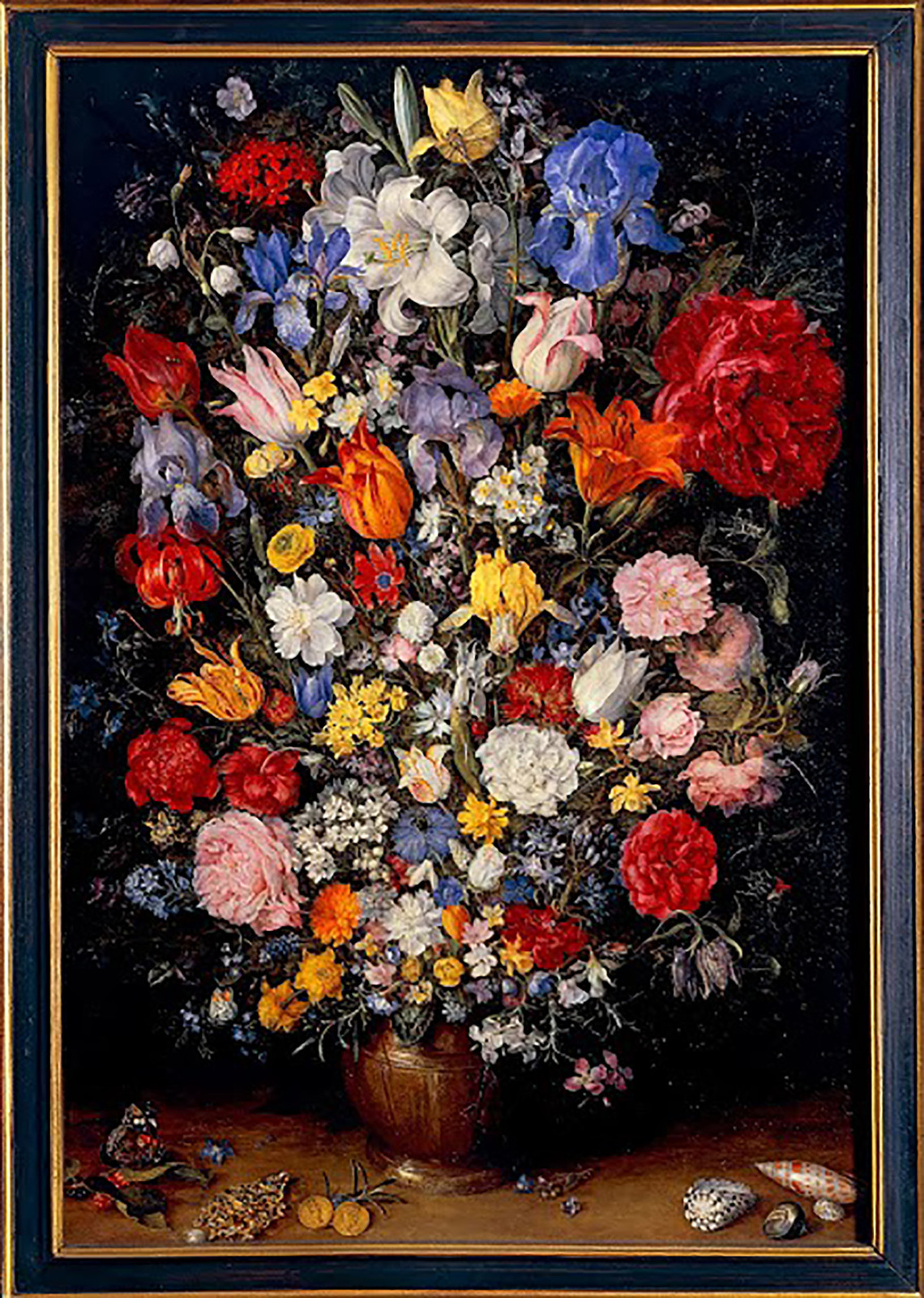Flowers in a Vase with Jewels, Coins, and Shells (Milan)
| Object type | Painting |
| Genre | Flower Still-Life and Nature Study |
| Date | 1606 |
| Dimensions | 65 x 45 cm |
| Support | Copper |
| Medium | Oil |
| Signature | BRUEGHEL. 1606 |
| Collectors/patrons | Federico Borromeo |
| Our attribution | Jan Brueghel the Elder |
| Other authorities | Ertz 2008-10, #431 Ertz 1979, #143 |
| Location | Milan, Italy |
| Collection | Ambrosiana |
| Accession numbers | inv. #66 |
| Tags | Insects, Vase, Coins, Flowers, Shells |






First mentioned in letter of Jan 27, 1606: he has not been able to finish a work already begun because he is waiting for the flowers to bloom.
In letter of 14 April 1606 Brueghel writes to Borromeo that he's started painting a vase of flowers for him; he's gone to Brussels to paint some flowers from life, that cannot be found in Antwerp. Borromeo will love it. He's going to finish the picture at the beginning of June and will send it right away. It's life -size. He will also be starting a painting of animals. On 25 August he writes that the work is finished and ads how rare and varied the flowers are, wonderful to see, and that he's added below them a jewel (una Gioia con manefatura de medaiglie, con ratita de mano.")
He refers to the painting again in letter of 11 April 1611, saying he made his first flower painting for Borromeo and his second for "le ser.mo Enfante in Brusselo"--this latter one is thought to be the painting now in Vienna. These two flower paintings are the only ones by Jan that do NOT exist in any copies or replicas.
There is a Vase of Flowers dated 1605, that was in the Age of Rubens show, that must actually be his earliest work in this genre. He did two for the archdukes, actually, now in Vienna inv. #s 548 and 570.
Borromeo wrote about the jewel in his Musaeum (cit Pijl 88): "Dipinse sul fondo del vaso un diamante, la cui vista ci fece capire quello che per altro avremmo egualmente pensato, che cioè l'opera ha il valore delle gemme, e noi la pagammo come tale".
Nothing ever said by Jan or by the Cardinal hints that these paintings had vanitas connotations, as some art historians used to claim.